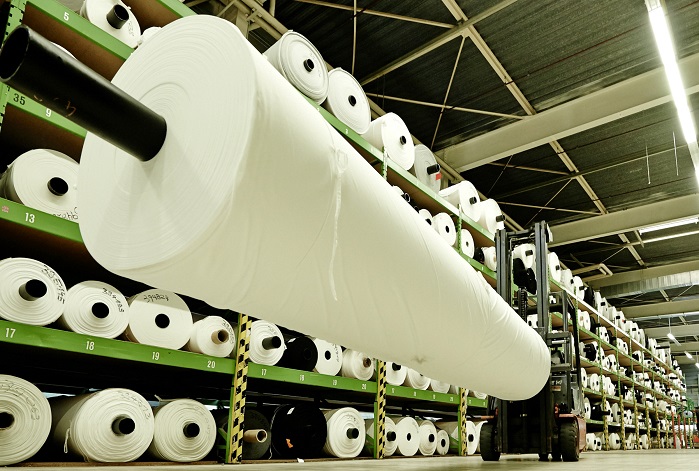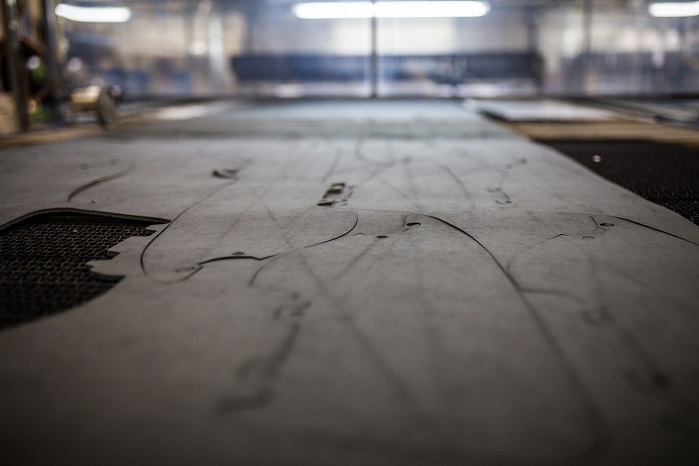
Techtextil North America welcomes new exhibitors
Techtextil is increasingly popular in the automobile sector, organisers report.

26th April 2017
Innovation in Textiles
|
Frankfurt
According to the German Association of the Yarns, Woven Fabrics and Technical Textiles Industry, more than 40 fibre-based applications with a total surface area of 35 square metres go into the production of the average car today.
“In view of this, it is hardly surprising that designers and engineers from the automobile industry rank among the most important groups of visitors at Techtextil,” organisers of the international trade fair for technical textiles and nonwovens report. The event will be held from 9-12 May in Frankfurt, Germany.

Seat covers, headliners, safety belts, filters, hoses, airbags, instrument panels and, increasingly, automotive parts made of fibre-reinforced plastic will be on display at the mobile-textile field at Techtextil. Almost half of the around 1,470 exhibitors will present materials, products and innovations for the Mobiltech area of application.
“The pursuit of targets such as weight reduction, increased comfort and sustainability is a driving force behind the use of textiles in cars,” said Philipp Porst, Deputy CEO of C. H. Müller. Among the products made by the Techtextil exhibitor are laminated and coated composites made of synthetic leather, textiles, leather and natural materials for system suppliers, such as Yanfeng, Grupo Antolin and Faurecia. From there, the composites go to OEMs, such as Audi, BMW, Mercedes and VW, in the form of seats, trim panels and parcel shelves.

At the fair, the company from Germany will present Velamina, a new trim material made of polyester microfibre for automobile interiors. “We wanted to combine the high-grade appearance and touch of modern micro-fibre surface finishes with ecologically sustainable polyester,” explained Porst.
According to Porst, the company’s development department is working not only on fibre materials and surface finishes but also on textile switches, electrodes and sensors. “It won’t be long before it will be possible to charge mobile telephones on inductive areas of car seats,” he said.
In a report for the Supply Industry Working Group, the IVGT association, which represents 9,000 automotive suppliers with an annual turnover of EUR 218 billion, forecasts that the world market for automobile textiles will be worth around US$ 32 billion by 2024. “For the coming fair, we expect to welcome over 650 exhibitors with products and materials for use in cars and trucks, including emergency and safety vehicles,” said Techtextil Director Michael Jänecke.

One of these exhibitors is Rökona, a textile supplier based in the German town of Tübingen. A specialist for knitted fabrics, dyeing and finishing on a large scale for OEMs and automotive suppliers, Rökona will be showing a new, patented shade solution for panorama roofs in Frankfurt. “With this new product, we can achieve a high degree of shade with a great increase in roof thickness,” said Rökona CEO Arved Westerkamp. Thus, the cassette, into which the panorama roof rolls when open, should be significantly smaller in future.
Another new, four-wheel development making its world debut at Techtextil 2017, will be the Erdenkind start-up for a three-in-one pram using Oeko-Tex-certified fibre material. “This is the first time that automotive knitting technology has been used for a pram,” said Arved Westerkamp. “Thanks to a special mechanism, the pram seat can ‘grow’ with the child.”
The aerospace sector is a traditional part of the Mobiltech area of application. Hence, mobile textiles will play a significant role at the Living in Space special area organised in cooperation with the European Space Agency (ESA) and the German Aerospace Centre, organisers report. There, a wide spectrum of technical textiles applications will be vividly illustrated by a future mission to Mars.

For example, Zimmermann from the Allgäu region of South Germany, a company that makes yarns for safety belts and plied yarn for airbags, will show a carbon yarn that Augsburg-based MT Aerospace used to make a housing for the solid-fuel booster rocket of the Ariane 6.
According to ESA, this satellite-launching rocket, which is still in the development phase, will make its first flight in 2020. DLR says that components made of carbon-fibre reinforced plastic are used, inter alia, to make mountings for solar panels, e.g., on the ISS, as well as heat-protection tiles on space vehicles or, in combination with aluminium honeycomb structures – for rocket fairings.

Business intelligence for the fibre, textiles and apparel industries: technologies, innovations, markets, investments, trade policy, sourcing, strategy...
Find out more